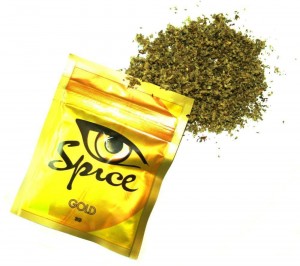Gabapentin May Increase Opioid-Related Deaths
 The anticonvulsant gabapentin is sometimes prescribed for chronic pain conditions along with opioids. A 2017 article by researcher Tara Gomes in the journal PLOS Medicine reports that compared to opioid prescriptions alone, co-prescription of gabapentin increases the risk of an opioid-related death by 49%. The risk was increased by 60% for those receiving moderate or high doses of gabapentin (those above 900 mg/day).
The anticonvulsant gabapentin is sometimes prescribed for chronic pain conditions along with opioids. A 2017 article by researcher Tara Gomes in the journal PLOS Medicine reports that compared to opioid prescriptions alone, co-prescription of gabapentin increases the risk of an opioid-related death by 49%. The risk was increased by 60% for those receiving moderate or high doses of gabapentin (those above 900 mg/day).
The increased risk when the drugs are taken together may be because both gabapentin and opioids depress the respiratory system. Opioids also slow the gastrointestinal system, meaning that more gabapentin is absorbed by the intestines than occurs when gabapentin is prescribed alone.
Gomes and colleagues looked at cases of patients who were prescribed opioids and had opioid-related deaths, and matched these with similar patients who had not died while taking prescription opioids during the same time period. The researchers found that having taken gabapentin in the previous 120 days dramatically increased the risk of death from opioid-related causes.
Gomes and colleagues suggest that caution should be used when prescribing gabapentin and opioid drugs at the same time.
Overdoses Possible on Synthetic Marijuana
 Several states have reported upticks in overdoses from synthetic marijuana over the past few years. Synthetic marijuana, sometimes called “spice” and sold under descriptors such as “botanical incense,” consists of man-made chemicals that are sprayed on plant matter and smoked, or sold as liquids to be consumed via e-cigarettes. Monitoring the Future, an ongoing survey of teen drug use in the US, reported in 2016 that 3.5% of high school seniors had used synthetic marijuana in the past year. The risks of the drug are not yet well known, since the chemicals used may vary from batch to batch.
Several states have reported upticks in overdoses from synthetic marijuana over the past few years. Synthetic marijuana, sometimes called “spice” and sold under descriptors such as “botanical incense,” consists of man-made chemicals that are sprayed on plant matter and smoked, or sold as liquids to be consumed via e-cigarettes. Monitoring the Future, an ongoing survey of teen drug use in the US, reported in 2016 that 3.5% of high school seniors had used synthetic marijuana in the past year. The risks of the drug are not yet well known, since the chemicals used may vary from batch to batch.
A case series published in the Western Journal of Emergency Medicine in 2016 described 11 cases of patients who received emergency room treatment for an overdose of the synthetic cannabinoid MAB-CHMINACA. According to the Drug Enforcement Agency, MAB-CHMINACA can cause severe toxicity, seizures, excited delirium, cardiotoxicity and death.
Kenneth D. Katz and colleagues reported that all 11 patients required sedation, while nine required intubation to provide respiratory support. Three of the 11 patients had seizures, and one suffered from hyperthermia (increased body temperature). One patient died as a result of decreased oxygen to the brain and rhabdomyolysis, a condition in which muscles break down and release toxins, shutting down the kidneys. Many of the 11 were children or adolescents.
Katz and colleageus stress that synthetic cannabinoid use is a public health crisis, and that emergency rooms should be prepared to provide aggressive sedation and respiratory support to people overdosing on MAB-CHMINACA.
Editor’s Note: ‘Spice’ is not only more potent than marijuana but also lacks the cannabinoids that are responsible for the beneficial effects of marijuana.

